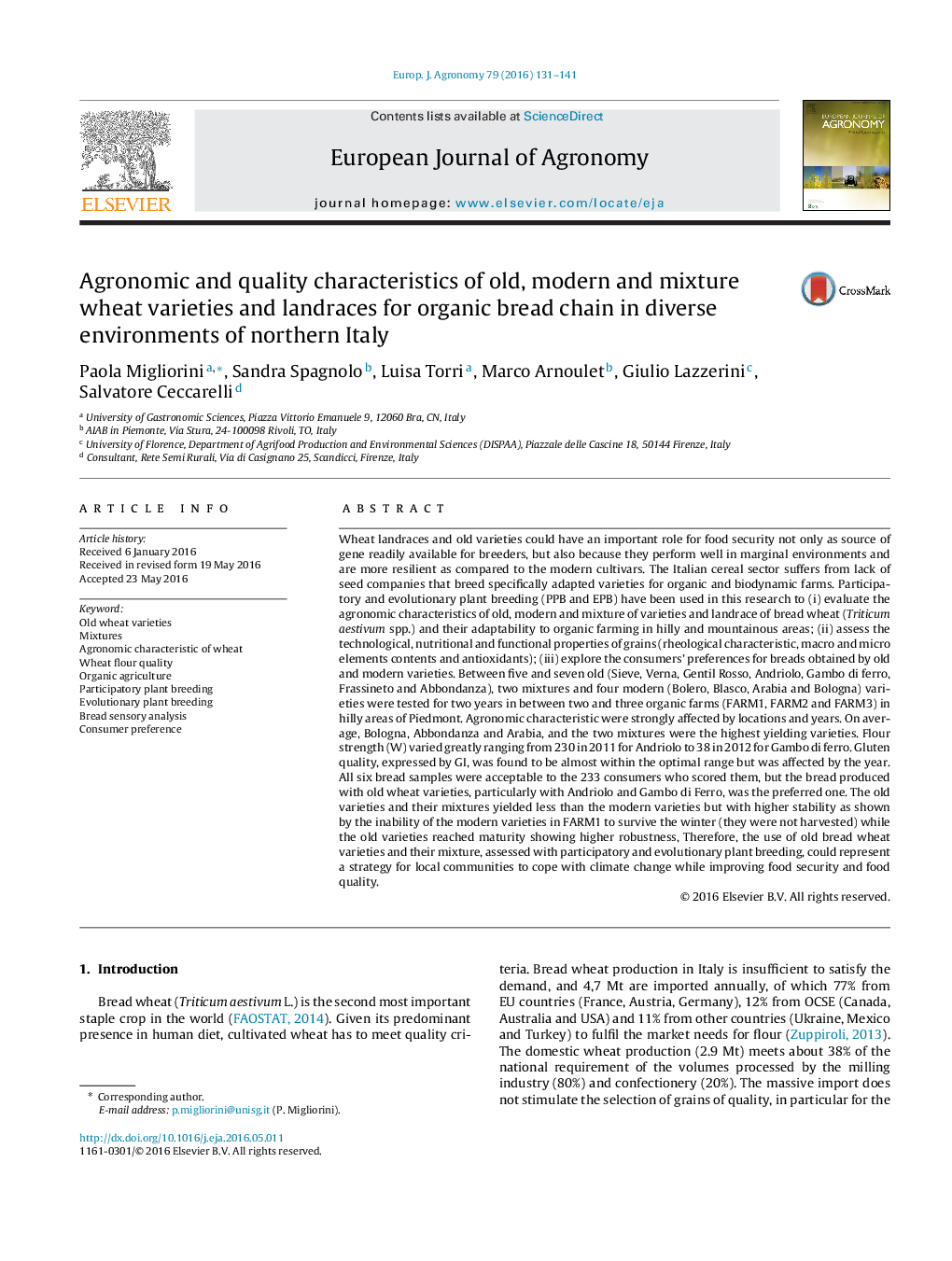| Article ID | Journal | Published Year | Pages | File Type |
|---|---|---|---|---|
| 6374238 | European Journal of Agronomy | 2016 | 11 Pages |
Abstract
Wheat landraces and old varieties could have an important role for food security not only as source of gene readily available for breeders, but also because they perform well in marginal environments and are more resilient as compared to the modern cultivars. The Italian cereal sector suffers from lack of seed companies that breed specifically adapted varieties for organic and biodynamic farms. Participatory and evolutionary plant breeding (PPB and EPB) have been used in this research to (i) evaluate the agronomic characteristics of old, modern and mixture of varieties and landrace of bread wheat (Triticum aestivum spp.) and their adaptability to organic farming in hilly and mountainous areas; (ii) assess the technological, nutritional and functional properties of grains (rheological characteristic, macro and micro elements contents and antioxidants); (iii) explore the consumers' preferences for breads obtained by old and modern varieties. Between five and seven old (Sieve, Verna, Gentil Rosso, Andriolo, Gambo di ferro, Frassineto and Abbondanza), two mixtures and four modern (Bolero, Blasco, Arabia and Bologna) varieties were tested for two years in between two and three organic farms (FARM1, FARM2 and FARM3) in hilly areas of Piedmont. Agronomic characteristic were strongly affected by locations and years. On average, Bologna, Abbondanza and Arabia, and the two mixtures were the highest yielding varieties. Flour strength (W) varied greatly ranging from 230 in 2011 for Andriolo to 38 in 2012 for Gambo di ferro. Gluten quality, expressed by GI, was found to be almost within the optimal range but was affected by the year. All six bread samples were acceptable to the 233 consumers who scored them, but the bread produced with old wheat varieties, particularly with Andriolo and Gambo di Ferro, was the preferred one. The old varieties and their mixtures yielded less than the modern varieties but with higher stability as shown by the inability of the modern varieties in FARM1 to survive the winter (they were not harvested) while the old varieties reached maturity showing higher robustness, Therefore, the use of old bread wheat varieties and their mixture, assessed with participatory and evolutionary plant breeding, could represent a strategy for local communities to cope with climate change while improving food security and food quality.
Related Topics
Life Sciences
Agricultural and Biological Sciences
Agronomy and Crop Science
Authors
Paola Migliorini, Sandra Spagnolo, Luisa Torri, Marco Arnoulet, Giulio Lazzerini, Salvatore Ceccarelli,
